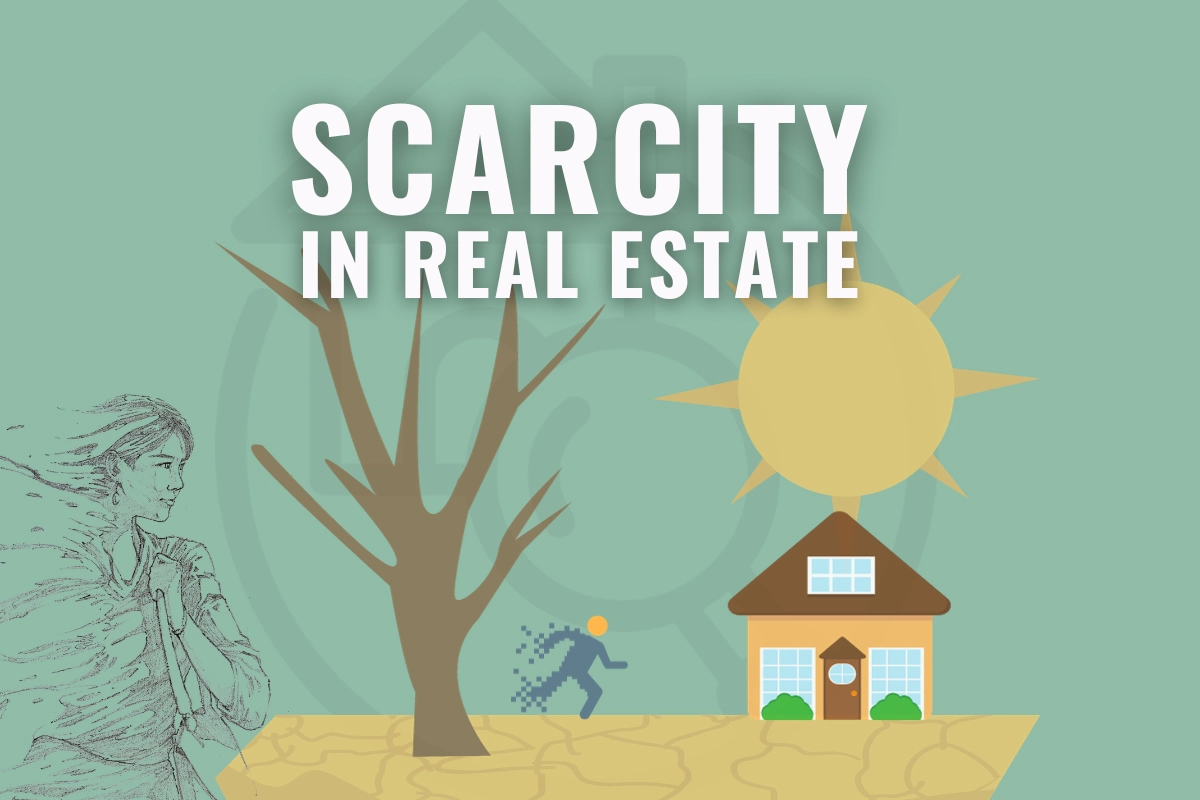In real estate, scarcity refers to the limited availability of properties in a desired location, type, or price point. When properties are scarce but demand is high, prices typically rise.
Effects of Supply and Demand on Real Estate Prices
- When more people want to buy homes than are homes available, prices go up. No surprise there.
- When there is limited supply, prices are driven even higher. Scarcity can arise due to geographical issues, lack of new development, or looking for particular property features.
- Real estate markets are dynamic. Fluctuations in supply and demand can quickly turn a buyers’ market into a sellers’ market.
Popular Confusions
- Scarcity vs. Desirability: It’s important to distinguish between actual scarcity and high desirability. A location may have many homes for sale but still be ‘scarce’ due to high demand.
- Market Bubbles: High demand and prices don’t always indicate scarcity. Sometimes, they can be signs of a market bubble. We’ll say more about this below.
How to Make the Best Use of This Information
Understanding the effects of scarcity on real estate prices will help you make informed decisions whether you’re buying, selling, or investing.
Tips to Navigate Scarcity in Real Estate
- Research Local Markets: Understand the specific supply and demand dynamics of the area you’re interested in.
- Talk to a Trusted Real Estate Agent: A good agent can provide insights into whether a market is experiencing actual scarcity. Don’t overlook this essential: Local agents with boots on the ground – connected to the market you are looking into – have real-time trustworthy information to share; they can assist you in making a qualified and informed decision. Ask questions!
- Consider Timing: In a scarce market, timing can be crucial. Be prepared to act quickly or wait out high-demand periods.
- Look for Emerging Markets: Sometimes adjacent areas offer similar benefits without the scarcity-driven price premium.
Remember, while scarcity can significantly impact real estate prices, it’s just one piece of a complex housing market puzzle. Northern California is currently facing a unique challenge. On one hand, there’s a noticeable scarcity of available properties, a classic sign of a sellers’ market. This scarcity naturally drives up property prices. However, concurrently, buyers are also grappling with high interest rates, making financing a home purchase more expensive.
This combination creates a market dynamic where the usual effects of scarcity (like rapidly increasing prices) may be tempered or altered by the reduced buying power of potential homeowners. For example, the historically high-priced and scarce home and condo market of San Francisco is experiencing price declines for the first time in a decade; this can create an opportunity for someone seeking to live there. One most likely can negotiate price and term concessions that were impossible in years past. However, areas like Napa and Sonoma are experiencing an influx of new buyers, so supply is limited there, and prices are increasing.
Don’t assume that prices will always rise in scarce markets or that all properties in high-demand areas are suitable investments. It’s also important to be aware of market trends and external factors like economic conditions and interest rates.
Is Northern California in a Real Estate Bubble?
Declaring a market bubble is a difficult task, fraught with speculation. Certainly, the Bay Area is experiencing challenges in supply, interest rates, and crime in major cities like Oakland and San Francisco. All this tends to drive buyers away, reducing competition. We are correspondingly seeing price reductions in San Francisco and several Oakland sub-markets.
However, as a broker with 35 years of experience and having been through 4 corrections, I do not see our market as a bubble. In 2008, it was because of buyers’ lack of equity (think down payments). Lenders were lending with horrible qualification guidelines, zero down payments, and, often, no-cost loans to a buyer. People had little incentive to hang on to their properties because they had no skin in the game. We saw this coming in 2006 and 2007, and several of our astute clients called the bubble out.
Since 2010, buyers must pay real down payments to purchase a home. With this much equity, they won’t leave their properties to foreclosure; they will hold on. Many have excellent low-interest rate mortgages, golden handcuffs, so to speak, and will stay in their homes. Ergo, prices will not crash, so there is no current bubble.
In the third quarter of 2023, the Bay Area saw a decline in home sales by 20% compared to the previous year. The average number of homes for sale was also down 37.2% from the third quarter of 2022. Yet despite the drop in sales, home sale prices dropped only 1.2% from the prior quarter of 2023 and were higher than last year. This suggests a cooling market, potentially influenced by high mortgage rates, which are at levels not seen since the fall of 2000.
The truth about this market? It’s complicated. Ask questions, stay informed, and talk to your local realtor and trusted expert.

